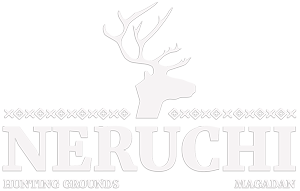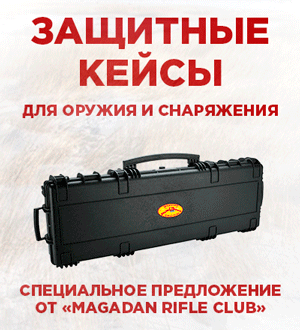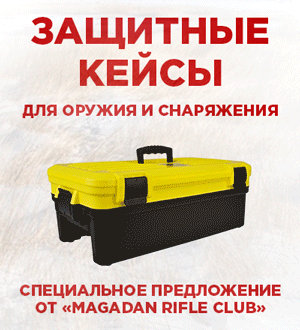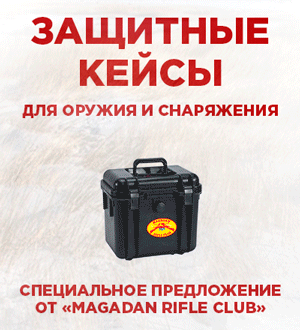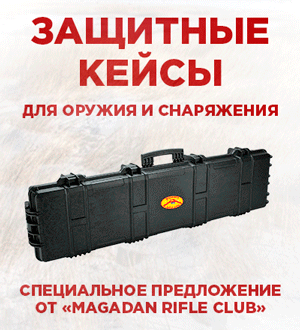Posted on February 9, 2017
Sound disguise on the hunt
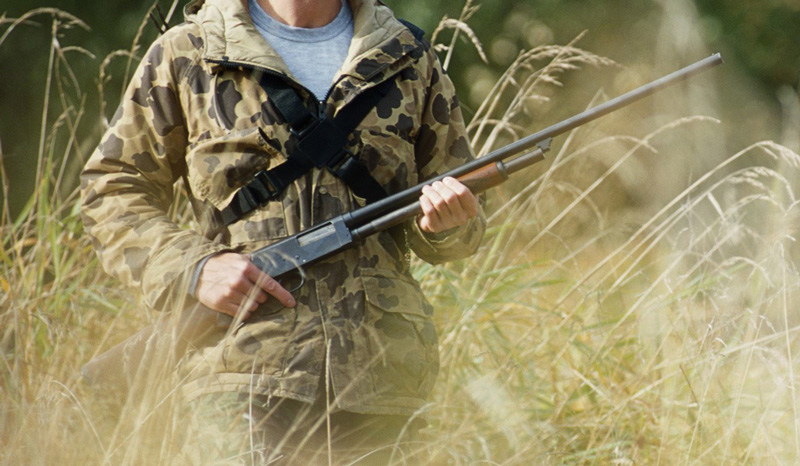
On the hunt, in addition to visual (visual) disguise, the nature of the cover under the feet (moss, grass, snow, etc.) is equally important, which either muffles the steps of the hunter, or gives out its noise.
Conventionally, all available types of cover can be divided into the following groups:
- Noisy;
- Noiseless;
- Low-noise (these are the transitional covers between the first two groups, which in nature there are many).
It often happens that a silent cover becomes noisy, and vice versa. For example, white lichen-yagelnik, which is widespread in vast areas of the taiga and tundra of the Russian North, with a high humidity is a silent cover, reminiscent of a soft carpet and drowning the steps of the hunter. But the same wet lichen in the frost (especially in the absence of snow) when walking along it starts to make a lot of noise, and in hot weather it dries up and breaks under your foot with a loud crunch, crumbling into powder.
Types of cover
In nature, there are many different types of cover:
- Grassy. Its noise depends on the density and height of the grass. No less important is their age: the younger and greener the stems, the softer and better they drown out the steps. But the withered and especially dried grass becomes noisy. But there are herbs, which by their nature are always tough and when they move along them they make a rustling, they can include a sedge;
- Moss. This cover is usually always soft and well conceals the steps;
- Forest. There is always the opportunity to step on treacherous boughs, which with a loud crack break under their feet and give out a walking hunter. To move silently through the forest, keeping silence, you need to have a lot of experience and be very attentive. Although even the most experienced hunters are not immune from the unexpected crunch of twigs, which are hidden by moss, grass or last year’s leaves. In the deciduous forest in spring and autumn, especially in dry weather, dry leaves rustle loudly underfoot, and cones in the coniferous trees fall from pines and trees and sometimes completely cover the ground. But the needles from larches can drown out steps in any weather;
- Sandy. A cover of pure sand will not give out a hunter when walking along it. In addition, after the rain, it becomes firm, almost does not run under your feet and becomes completely noiseless.
Silent types of cover include hard earth, bare stones, dry clay, etc., but only if the person’s feet are shod in hunting soft shoes.
Moving along the marshy swamp, keeping silence, though difficult, but still possible, if you go with care and utmost attention.
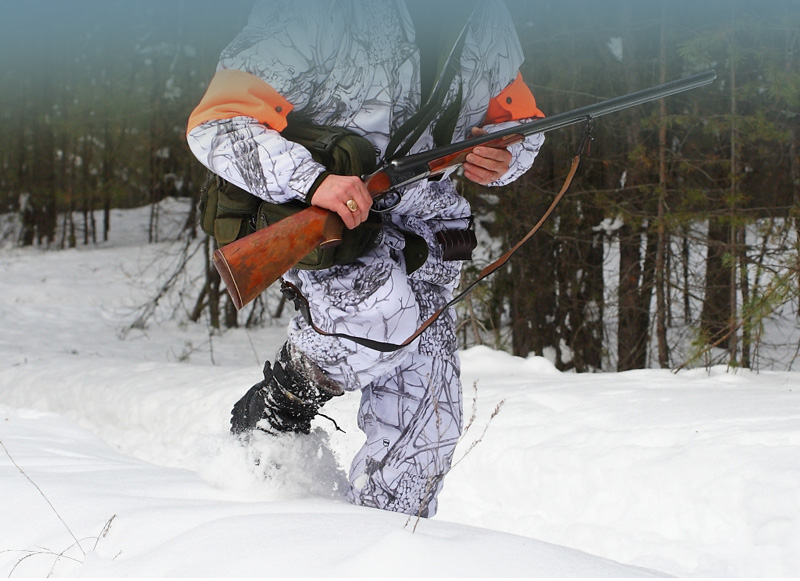
Snow cover
This type of cover should be highlighted, since it usually takes place most of the hunting animals and under different weather conditions it behaves differently.
When walking through the snow under your feet, many snowflakes break and change their form, which becomes the cause of the creaking, so it is almost impossible to completely avoid noise on this cover.
Snow cover even in the same place undergoes significant changes over time. Freshly fallen snow usually covers the ground, especially in the forest, with a soft and fluffy shroud that drowns out noise and hides the steps of the hunter. It is considered one of the best snow cover. But literally the next day the snow sinks noticeably under its own weight and its compaction takes place. This process continues all the time, making the snow very dense, and subsequent snowfall increases its depth.
In December, in much of Russia, the snow becomes grainy, especially in the lower layer. Therefore, when moving along it a deaf but loud sound is heard. By spring, when in warm weather, the snow, heated by the sun, becomes moist and moist, and at night it freezes, the surface is covered with a hard crust – tingling. According to the hardness and thickness, it can be different, sometimes the nast reaches the earth itself, that is, the snow frosts to the full depth.
Such changes in the snow cover occur mainly in the forest. In open terrain (field, steppe, tundra), where there is no vegetation, changes in the snow cover are formed mainly under the influence of wind. In addition, the snow is freezing from the compaction of snowflakes, and the stronger the compression and the harder the frost, the faster this happens. It is possible to give an example: the trace of ungulate animals is compacted unevenly, since its front wall along the wall loses more than the rear. It is due to the fact that removing the foot from the snow to take the next step, the beast tilts it forward, slightly squeezing the snow, and with the rear wall of the track such compression does not occur. For pathfinders and hunters, snow frosts serve as an important indicator.
The wind, which blows snow from place to place, produces a similar effect: the compaction and the freezing of displaced snowflakes depends on the strength and duration of the wind, and also the frost.
In the tundra, where the long blizzards and snowstorms are strong, the snow is already frozen by November, so that the deer are free to move around the crust without falling through, and hardly pierce the snow with hoofs, gaining food. On the coast of Taimyr, the snow becomes so hard that industrialists have to cut through it with an ax to install traps for arctic foxes.
The wind in the open area is not restrained by trees and carries large masses of snow, and it usually does not exist on the highlands, since it is blown away from them and settles in depressions and depressions. Therefore, in the lowlands, the snow is deep, and on the elevations is much smaller. Since all roughnesses are compared, the depth of snow turns out to be different, not only between large differences in elevations and depressions, but also in smaller areas. For example, small pits and grooves, furrows on a plowed field are equated with snow, and hunters quite often suddenly fall into them. Often, the surface of the snow is covered with so-called “prickers”, formations resembling frozen waves.
All these factors have a significant effect on the density of snow in open areas, so it is in most cases uneven. Smooth and smooth places are characterized by the same hardness of the snow cover, but in the presence of drifts and sastrug it becomes multifaceted: literally a few steps away the snow can be soft, then with a hardened surface that hardly breaks under the foot or breaks into blocks. Therefore, the noise and sounds produced by the walking hunter change rather sharply, and one has to guess where to step in order to move silently.
In such open places as ice and mountains, blowouts are often formed, that is, separate areas without snow, carried away by the wind. To decide how best to go in this case – for blowing or snow – it is necessary to take into account the conditions of a specific locality (depending on the cover of the bare area and the hardness of the snow near it). But most often it depends on other circumstances: animal behavior, relief, wind direction, the presence of barriers and others.
In spring and autumn, a thin ice crust is often formed on the water in swamps, which becomes an insurmountable obstacle to silent advance. Of course, you can jump from a hummock to a hummock, provided they are present, otherwise you will have to go around.
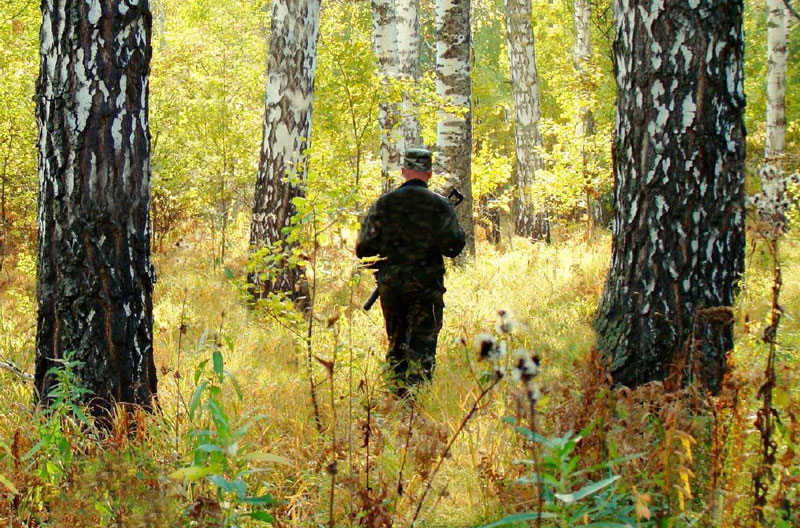
And more about what it is necessary to remember always. Hunting clothes and shoes should be suitable for sound masking; The main thing is that they are soft. Then the hunter will not stomp, branches and grass will not slash by clothes and boots. And the clothes will not rustle. For example, marsh hunting boots are not suitable for hunting, where silence is required, for example. When walking they loudly knock, and walking in them greatly tires the hunter because of their inability and weight. And if we summarize the above, then we can conclude that the weight of clothing and shoes hunter is directly related to sound masking. After a tired person makes more noise when driving. That’s why you need to carefully select the equipment for hunting and, ideally, have light clothes and shoes.
Source: www.sezonoxoti.ru

